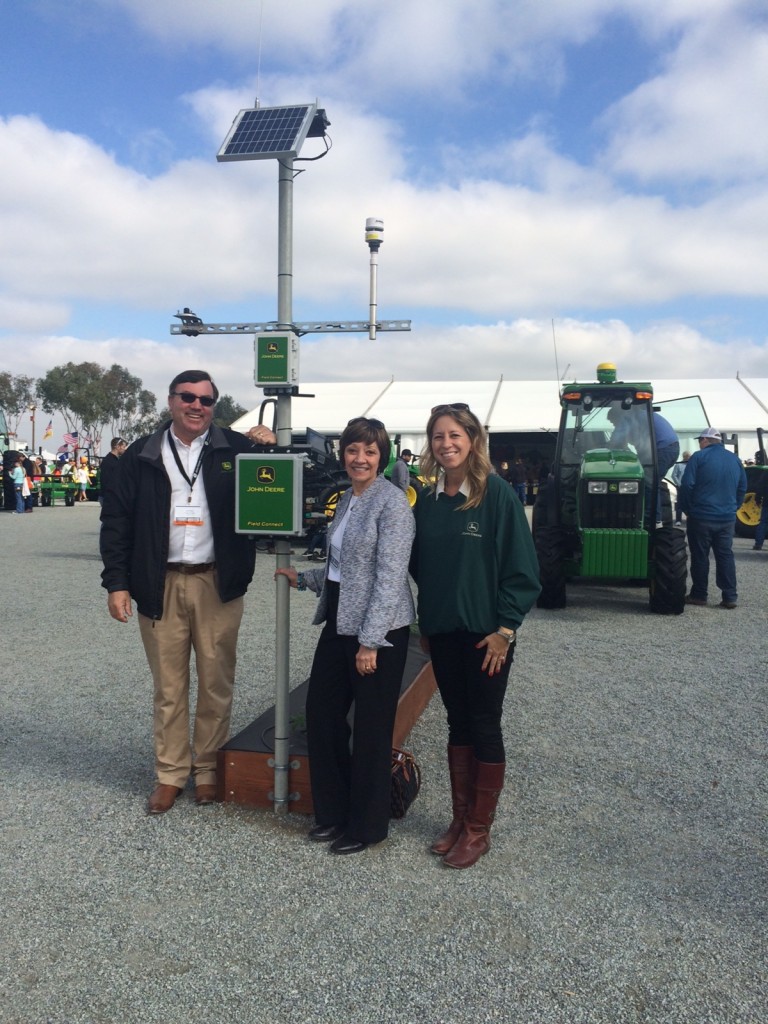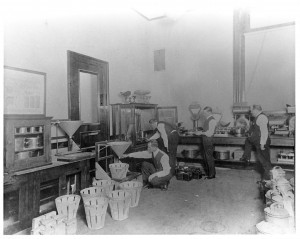-
Recent Posts
- Lowering the boom on illegal fireworks — CDFA teamed up with San Bernardino County Fire to confiscate 13 tons prior to July 4th
- $600 million for CDFA in new budget year
- A Pride Month Conversation with Cody Nicholson Stratton, of Foggy Bottoms Boys Farms
- Experience California Agriculture — Secretary Ross applauds new agritourism website from California Grown
- CDFA Celebrates Pride Month with Panel of LGBTQ+ Voices
Recent Comments
- Yvonne McCurley on A Pride Month Conversation with Cody Nicholson Stratton, of Foggy Bottoms Boys Farms
- Diana Shima on A Pride Month Conversation with Cody Nicholson Stratton, of Foggy Bottoms Boys Farms
- Andy on Experience California Agriculture — Secretary Ross applauds new agritourism website from California Grown
- EDWARD RING: Saving California’s rural water users ~ MAVEN'S NOTEBOOK | California Water News Central on Nine California Counties Make Top-10 List for Ag Sales in the U.S.
- Urban agriculture grows in the Sacramento region • Sacramento News & Review on Community Alliance for Family Farmers emergency fund for drought and pandemic relief
Archives
- July 2025
- June 2025
- May 2025
- April 2025
- March 2025
- February 2025
- January 2025
- December 2024
- November 2024
- October 2024
- September 2024
- August 2024
- July 2024
- June 2024
- May 2024
- April 2024
- March 2024
- February 2024
- January 2024
- December 2023
- November 2023
- October 2023
- September 2023
- August 2023
- July 2023
- June 2023
- May 2023
- April 2023
- March 2023
- February 2023
- January 2023
- December 2022
- November 2022
- October 2022
- September 2022
- August 2022
- July 2022
- June 2022
- May 2022
- April 2022
- March 2022
- February 2022
- January 2022
- December 2021
- November 2021
- October 2021
- September 2021
- August 2021
- July 2021
- June 2021
- May 2021
- April 2021
- March 2021
- February 2021
- January 2021
- December 2020
- November 2020
- October 2020
- September 2020
- August 2020
- July 2020
- June 2020
- May 2020
- April 2020
- March 2020
- February 2020
- January 2020
- December 2019
- November 2019
- October 2019
- September 2019
- August 2019
- July 2019
- June 2019
- May 2019
- April 2019
- March 2019
- February 2019
- January 2019
- December 2018
- November 2018
- October 2018
- September 2018
- August 2018
- July 2018
- June 2018
- May 2018
- April 2018
- March 2018
- February 2018
- January 2018
- December 2017
- November 2017
- October 2017
- September 2017
- August 2017
- July 2017
- June 2017
- May 2017
- April 2017
- March 2017
- February 2017
- January 2017
- December 2016
- November 2016
- October 2016
- September 2016
- August 2016
- July 2016
- June 2016
- May 2016
- April 2016
- March 2016
- February 2016
- January 2016
- December 2015
- November 2015
- October 2015
- September 2015
- August 2015
- July 2015
- June 2015
- May 2015
- April 2015
- March 2015
- February 2015
- January 2015
- December 2014
- November 2014
- October 2014
- September 2014
- August 2014
- July 2014
- June 2014
- May 2014
- April 2014
- March 2014
- February 2014
- January 2014
- December 2013
- November 2013
- October 2013
- September 2013
- August 2013
- July 2013
- June 2013
- May 2013
- April 2013
- March 2013
- February 2013
- January 2013
- December 2012
- November 2012
- October 2012
- September 2012
- August 2012
- July 2012
- June 2012
- May 2012
- April 2012
- March 2012
- February 2012
- January 2012
- December 2011
- November 2011
- October 2011
- September 2011
- August 2011
- July 2011
- June 2011
Categories
- AG Vision
- Agricultural Education
- Agricultural Marketing
- Alternative Fuels
- Animal health
- Animal Welfare
- Asian Citrus Psyllid
- Biodiversity
- Border stations
- BSE
- Cannabis
- Cannella Panel
- Climate Change
- Climate Smart Agriculture
- Community-based Food System
- Conservation
- Dairy
- Drought
- Environment
- Fairs
- Farm Bill
- Farm Labor
- Farmers' Markets
- Fertilizer
- Food Access
- Food Safety
- Food Waste
- Glassy-winged Sharpshooter
- Growing California
- Healthy soils
- HLB
- Hydrogen
- Integrated Pest Management (IPM)
- Invasive Species
- Light Brown Apple Moth
- Livestock ID
- Measurement Standards
- Nutrition
- Organic agriculture
- Pierce's Disease
- Pollinators
- Specialty Crops
- State Board of Food and Agriculture
- Succession Planning
- Trade
- Uncategorized
Pages
RSS

West Coast Governors Call for an End to Port Labor Impasse
Posted in Trade
Tagged Governor Brown, Governor Inslee, port impasse, Ports, West Coast ports
Leave a comment
Video: Measurement standards protect consumers and businesses in commercial transactions
This video by the California Department of Food and Agriculture features Kristin Macey, director of the department’s Division of Measurement Standards, explaining the importance of preserving and enforcing uniform standards of measurement to protect both consumers and businesses in commercial transactions.
Posted in Measurement Standards
Tagged Kristin Macey, measurement standards, weights and measures
Leave a comment
Video: Secretary Ross offers updates on drought, dairy pricing in interview at World Ag Expo
At the World Ag Expo February 10-12 in Tulare, CDFA Secretary Karen Ross was interviewed by WAE-TV, a partnership with the Expo and Dairy Business Communications. She provided updates on California’s ongoing drought and recent activity on the dairy pricing front – as well as her highlights from the annual show.
Video: Taking Advantage of Storm Flows
DWR Director Mark Cowin and USBR Mid-Pacific Regional Director David Murillo respond to storm flow questions at a recent California State Board of Food and Agriculture meeting.
The California Department of Water Resources, which operates the State Water Project, and the U.S. Bureau of Reclamation, which operates the Central Valley Project, do not act by themselves. They coordinate closely with partner agencies to exercise flexibility to help protect multiple interests. Decisions about when to release water and when to pump are influenced in great measure by the State Water Resources Control Board, which imposes certain flow and salinity standards in its water rights permits. In addition, the National Marine Fisheries Service and U.S. Fish and Wildlife Service require certain actions to protect the federally listed Delta smelt and Chinook salmon. These include curtailment of pumping when either species is discovered near the pumping plants.
Posted in Drought, State Board of Food and Agriculture
Tagged drought operations, storm flows
2 Comments
World Ag Expo – a world-class showcase for Ag

Secretary Ross (center) at the 2015 World Ag Expo with Craig Hornung and Jennifer Maloney of John Deere.
Tulare County is the number-one Ag county in the nation and the perfect place to host the annual World Ag Expo. I was honored to be able to visit this week.
The Expo wouldn’t happen without extraordinary organizational leadership and the force of 1,200 volunteers of all ages who help shine the spotlight on agriculture, especially in the San Joaquin Valley – home to seven of the nation’s top Ag counties!
Agriculture in California didn’t become the renowned power house it is by standing still. It’s in the DNA of California farmers and ranchers to constantly innovate, embrace technology, and figure out new ways to do things better and more efficiently. All this helps them bounce back from adversity – even when Mother Nature throws a curve ball like our current drought.
And that’s the importance of the World Ag Expo. It showcases the latest developments and brings farmers together to exchange ideas they can take back to their operations to continue to produce high quality California-grown agricultural products. Walking the Expo’s 80 acres and 2.6 million square-feet of exhibit space, and seeing what the 1,500 exhibitors and vendors had to offer were great reminders of everything it takes to keep California agriculture number-one!
Posted in Uncategorized
1 Comment
Measurement Standards: It All Started Down on the Farm…

An impressive array of equipment in an early CDFA metrology lab (undated). See additional photos at the end of this post.
When you go to the supermarket and you buy a gallon of milk or a pound of oranges, how do you know you’re getting your money’s worth? How about a quart of oil, or an acre of land, or a truckload of building materials? Well, it all started down on the farm…
As our ancestors made the transition from their hunter-gather origins to agriculture-based communities, the concept of the farm as an essential part of their lives evolved along with them. Over many generations, the farm became a central point not just for the community’s sustenance and survival, but also for its commerce. Early farmers and the people who bought, sold and traded for what they grew developed a richer understanding of the science of measurement as a basis for fairness in that burgeoning marketplace. Many industries developed and adapted their own measurement standards, but the standards for measuring staples like milk and grain, the weight of livestock, an acre of land and many more were largely learned and passed down by societies because of interactions with farmers.
In the relatively brief history of California, folks who lived in rural communities and needed an accurate weight for a commercial transaction knew where to go – to the farmer. That’s who had the spot-on scales and other measuring devices, as well as the expertise to use them. Even for the “city folk” who had ample occasion to make or convert measurements in their daily lives, one obvious place to look was the farmer’s almanac. For centuries, agriculture has provided a trustworthy, reliable platform for fairness in commercial transactions.
Fast-forward to today, and CDFA’s Division of Measurement Standards carries on that public trust by ensuring the accuracy of a broad range of devices used in commercial transactions, from gas pumps to truck scales to supermarket price scanners. CDFA’s regulatory leadership and technical expertise in the science of measurement is a key reason why Californians trust that a gallon is a gallon, whether it’s milk or gas or olive oil. With the assistance of county sealers and their inspectors, weights and measures officials are able to routinely inspect and test the 1.4 million scales, meters and other commercially used devices registered throughout California.
The Future of Measurement Standards
As modern commerce races ahead with new technologies, products and services, the standards of measurement must keep pace. For example: with the recent approval of a hydrogen fuel dispenser at California State University, Los Angeles, the Golden State’s consumers are well on their way to adding a few kilograms of hydrogen (and zero emissions) to the weekly shopping list. CDFA’s experts approved the equipment used to dispense that fuel. Another new “fuel” is electricity, and CDFA is focusing its efforts on the specifications and accuracy requirements for publicly available electric car charging stations that are popping up to meet the demand created by 120,000 electric vehicles now driving on California roads. Whatever the next advancement, we’ll be there. Just think of it as the latest in a long line of evolutionary steps that started on the very first farm.
- An impressive array of equipment in an early CDFA metrology lab (undated).
- “An Inspector of Weights & Measures testing a gasoline meter with a Seraphin Field Standard.” (undated)
- CDFA and county inspectors would have had a hand in approving both the milk in the dairy truck and the pumps at the gas station. That’s 30 cents a gallon for regular.
- A Triner brand postal scale from the mid-1970s, showing a first class rate of 10 cents for the first ounce.
- A Chicago Scale Co. weighbeam scale certified and stickered (repeatedly) by Inyo/Mono County Sealer of Weights & Measures.
- This advertisement shows a range of scales for use with various dairy products. (undated; likely from the mid 1920s or early 1930s)
USDA announces $30 million to fight citrus disease
USDA Secretary Tom Vilsack has announced $30 million in funding for 22 projects to help citrus producers combat Huanglongbing (HLB), also known as citrus greening, a devastating citrus disease that threatens U.S. citrus production. The money will fund promising projects that could offer near-term solutions as well as research funding that may develop long-terms solutions. The promising near-term tools and solutions are funded through the HLB Multiagency Coordination Group while the research projects are funded through the Specialty Crop Research Initiative Citrus Disease Research and Education (CDRE) program, which is made available through the Agricultural Act of 2014 (Farm Bill).
“Our HLB Multi-Agency Coordination Group has worked closely with the citrus industry to select and fund projects that we think will make a real difference for growers against HLB,” said Vilsack. “Funding these projects through cooperative agreements puts us one step closer to putting real tools to fight this disease into the hands of citrus growers.” Vilsack continued, “Through the CDRE research we are announcing today, we are also investing in long-term solutions to diseases that threaten the long-term survival of the citrus industry.”
USDA’s HLB Multi-Agency Coordination Group funded fifteen projects that support thermotherapy, best management practices, early detection, and pest control efforts for a total of more than $7 million. All of them are designed to provide near-term tools and solutions to help the citrus industry fight HLB. The projects include:
Two projects to provide improved delivery of thermotherapy to HLB infected trees, a promising treatment that has shown to help infected trees regain productivity after treatment. One of these projects will test thermotherapy on a grove-wide scale.
Six projects to provide citrus producers with best management practices in Florida citrus groves.
One project will focus on lowering the pH of the irrigation water and soil to strengthen the root systems of citrus trees to help them better tolerate HLB infection.
Three projects will support different combinations of integrated management approaches for sustaining production in trees in different stages of infection.
Two projects will test strategies for preventing tree death due to HLB infection. One of those will field test rootstocks that have shown ability to tolerate HLB infection. The other will use technologies to rapidly propagate the tolerant material for field use by the industry.
Three projects to increase early detection of HLB.
One project will train dogs to detect HLB infected trees. Detector dogs have proven to be highly adept at detecting citrus canker and early results suggest they will be an effective early detection tool for HLB.
One project will develop a root sampling and testing strategy.
One project will compare several promising early detection tests.
Four projects to provide tools to kill the Asian citrus psyllid (ACP), the vector of HLB.
One will produce and release the insect Diaphorencyrtus aligarhensis as a second biological control agent in California.
One project will use a biocontrol fungus to kill ACP adults.
One project will use a trap to attract and kill ACP adults.
One project will increase the use of field cages for the production of the insect Tamarixia radiata in residential areas, especially those that are adjacent to commercial groves in Texas. Tamarixia has already proven to be an effective biological control agent for ACP. Using field cages will enable the wider use of this effective ACP control.
In addition to these projects, USDA’s National Institute of Food and Agriculture funded more than $23 million dollars for research and education project to find lasting solutions to citrus greening disease. Examples of funded projects include developing HLB-resistant citrus cultivars, the development of field detection system for HLB, using heat as a treatment for prolonging productivity in infected citrus trees, creating a new antimicrobial treatment, among others. A fact sheet with a complete list of awardees and project descriptions (PDF, 316KB) is available on the USDA website. Fiscal year 2014 grants have been awarded to:
- University of California, Davis, Calif., $4,579,067
- University of California, Riverside, Calif., $1,683,429
- University of Florida, Gainesville, Fla., $4,613,838
- University of Florida, Gainesville, Fla., $3,495,832
- University of Florida, Gainesville, Fla., $3,338,248
- University of Florida, Gainesville, Fla., $2,096,540
- Kansas State University, Manhattan, Kan., $3,734,480
CDRE is a supplement to the Specialty Crop Research Initiative (SCRI). The focus of this year’s funding was specifically on citrus greening disease. Because there are wide differences in the occurrence and progression of HLB among the states, there were regional as well as national priorities for CDRE. These priorities, recommended by the Citrus Disease Subcommittee, fall within four categories: 1) priorities that deal with the pathogen; 2) those that deal with the insect vector; 3) those that deal with citrus orchard production systems; and 4) those that deal with non-agricultural citrus tree owners.
The Farm Bill builds on historic economic gains in rural America over the past six years, while achieving meaningful reform and billions of dollars in savings for taxpayers. Since enactment, USDA has made significant progress to implement each provision of this critical legislation, including providing disaster relief to farmers and ranchers; strengthening risk management tools; expanding access to rural credit; funding critical research; establishing innovative public-private conservation partnerships; developing new markets for rural-made products; and investing in infrastructure, housing and community facilities to help improve quality of life in rural America. For more information, visit www.usda.gov/farmbill.
Posted in Uncategorized
1 Comment
Changing times at Tulare’s World Ag Expo – from the Hanford Sentinel
By Seth Nidever
Sure, you can still see the huge tractors and the weird-looking equipment. You can still test-drive a four-wheel-drive truck. You can still eat sandwiches stuffed with fresh barbecue.
As has been the case for several years, there will be tens of thousands of visitors, roughly 1,500 exhibitors and 2.6 million square feet of exhibition space at the world’s largest agricultural trade show scheduled for Tuesday-Thursday (this week) at the International Agri-Center in Tulare.
But if you look a little deeper, you’ll see the changing face of California agriculture.
Case in point: Drip-irrigation pioneer Netafim. The Israeli company has been attending the expo for years, tucked away into a booth in the irrigation pavilion.
This year, on Wednesday, the company is holding a press conference at the show to discuss a worldwide shift toward smart irrigation solutions to fight a scarcity of food, water and land.
The days of gravity-driven flood or row irrigation in the San Joaquin Valley are fading fast as a multi-year drought continues with no end in sight.
One company — Lindsay Corp. — is trying to persuade square-block farmers to shift to central pivot irrigation. That would mean a radical transition from squared-off fields to huge crop circles, with slices of uncultivated land in between.
Some Westside farmers have experimented with the method, but it hasn’t caught on in Kings County.
Another company, Livestock Water Recycling, will be on hand to discuss ways dairies can recycle manure water and concentrate organic nutrients into ultra-rich fertilizer.
Some of the most proactive Kings County dairies reuse water several times over before it’s finally sent to the lagoon.
Another business, AGCO, is focused on finding ways for California producers to comply with stringent air quality regulations in the San Joaquin Valley. Engine requirements are often tricky and difficult to navigate, especially with used equipment.
The Propane Education & Research Council will be promoting the concept of switching to pumps powered by propane instead of diesel or electricity.
To give attendees even more opportunity to deepen their knowledge, there are dozens of seminars.
Still, the show has a lighter side.
There’s an “after-hours party” on Wednesday featuring the band Leaving Austin. There a separate arena dedicated to product testing and live demonstrations. There’s a “Farmers Lunch” scheduled for noon on Thursday.
And yes, you can still get behind the wheel of a tractor and take it for a test drive.
Posted in Uncategorized
Leave a comment
USDA announces more than $9 million to help farmers and ranchers who are veterans and/or socially disadvantaged
Deputy Secretary Krysta Harden has announced over $9 million in grant funds will soon be available for outreach and technical assistance to minority and veteran farmers and ranchers. This funding will enable community-based organizations, eligible higher education institutions and tribal organizations to work directly with these groups to successfully acquire, own and operate farms and ranches and to access all USDA programs and services. These funds are being provided through the Outreach and Assistance for Socially Disadvantaged Farmers and Ranchers and Veteran Farmers and Ranchers Program, also known as the “2501 Program”.
Through the 2501 Program, outreach and technical assistance is provided to minority and veteran farmers and ranchers through partnering organizations, including 1890 Land Grant Institutions, 1994 Land Grant Institutions, other American Indian Tribal community colleges and Alaska Native cooperative colleges, Hispanic-serving and other institutions of higher education, Tribal governments and organizations, and community-based organizations.
“To stay competitive, America’s farmers and ranchers must be diverse in experience, background and skills. Every farmer and rancher has something to contribute to America’s agriculture. Community partnerships can help farmers and ranchers reach their full potential,” said Deputy Secretary Krysta Harden. “As we celebrate the first anniversary of the 2014 Farm Bill, programs like these are evidence that an investment in all of America’s farmers and ranchers is an investment in our future.”
Applications for the 2501 program must be submitted through www.grants.gov. More information about the 2501 Program, including forthcoming grant notice and application deadlines is available at: http://www.outreach.usda.gov/grants/index.htm.
The Deputy Secretary also announced the formation of a Socially Disadvantaged Farmers and Ranchers Policy Research Center dedicated to collecting and analyzing data, developing policy recommendations, and evaluating policy concerning socially disadvantaged farmers and ranchers including minorities, veterans, and Native Americans. This one-time competitive program is open to any eligible 1890 Land-Grant Institution interested in hosting the Center.
The Deputy Secretary made the announcement at the Federation of Southern Cooperatives, which was awarded a 2501 Grant last year to conduct training, outreach, and technical assistance to minority and veteran farmers and ranchers.
Since 2010, the 2501 Program has distributed more than $66 million to 250 partners. The program is administered by the USDA’s Office of Advocacy and Outreach. The 2014 Farm Bill reauthorized the program and expanded assistance to include military veterans.
The 2014 Farm Bill builds on historic economic gains in rural America over the past five years, while achieving meaningful reform and billions of dollars in savings for taxpayers. Since enactment, USDA has made significant progress to implement each provision of this critical legislation, including providing disaster relief to farmers and ranchers; strengthening risk management tools; expanding access to rural credit; funding critical research; establishing innovative public-private conservation partnerships; developing new markets for rural-made products; and investing in infrastructure, housing and community facilities to help improve quality of life in rural America. For more information, visit www.usda.gov/farmbill.
Posted in Uncategorized
Leave a comment
Federal government to boost drought funding by $50 million – from the Monterey Herald
By Fenit Nirappil, Associated Press
The federal government is making available up to $50 million in drought-relief funds for western states, with the largest portion earmarked for parched California, U.S. Secretary of the Interior Sally Jewell and Gov. Jerry Brown announced Friday.
The additional funding includes about $20 million for the Central Valley Water Project for efforts such as water transfers, drought monitoring for endangered species and diversifying water supplies. California is entering its fourth year of drought.
“California is ground zero for the drought. There is no state that is worse off,” Jewell said.
Farmers and local water departments can also compete for another $14 million for projects to help reduce water use and develop response plans to continuing drought conditions.
The funding announcement came as the first major storm of 2015 moved into Northern California, bringing with it the potential for up to 10 inches of rain in places. It arrived after an exceptionally dry January. Last week’s survey of water in the snowpack, California’s primary water source, found only a quarter of its normal level.
The Department of Interior funding is a sliver of previous drought-relief commitments. Last February, President Barack Obama pledged $183 million, mostly for farmers who lost livestock and food banks to help unemployed agriculture workers. Brown in March signed a $687 million drought-relief package, including for emergency drinking water and accelerating infrastructure supplies.
Efforts to pass a federal drought-response bill in Congress failed late last year. House Majority Leader Kevin McCarthy and other Republicans say the Obama administration’s approach to dry conditions continues to prioritize fish over farmers and other residents in California.
The State Water Resources Control Board announced this week that Californians cut monthly water use by 22 percent in December, meeting Brown’s call to slash residential water use by 20 percent for the first time. The board may impose further limits on outdoor water use as the state tries to protect supplies, but Brown said he’s not ready for mandatory restrictions statewide.
“I’m reluctant to expand the coercive power of state authority,” Brown said. “In a democracy, it is fundamental that citizens be the driving force. It’s my job to encourage and inspire and monitor, but before we have, you know, full-scale rationing we have to have a few more problems than we currently have.”
California is only delivering 15 percent of the water requested from the state’s vast reservoir system to farmers and local agencies this year. The Interior Department will announce how much water it will send to Central Valley farmers under a separate reservoir system later this month.
Posted in Uncategorized
Leave a comment










